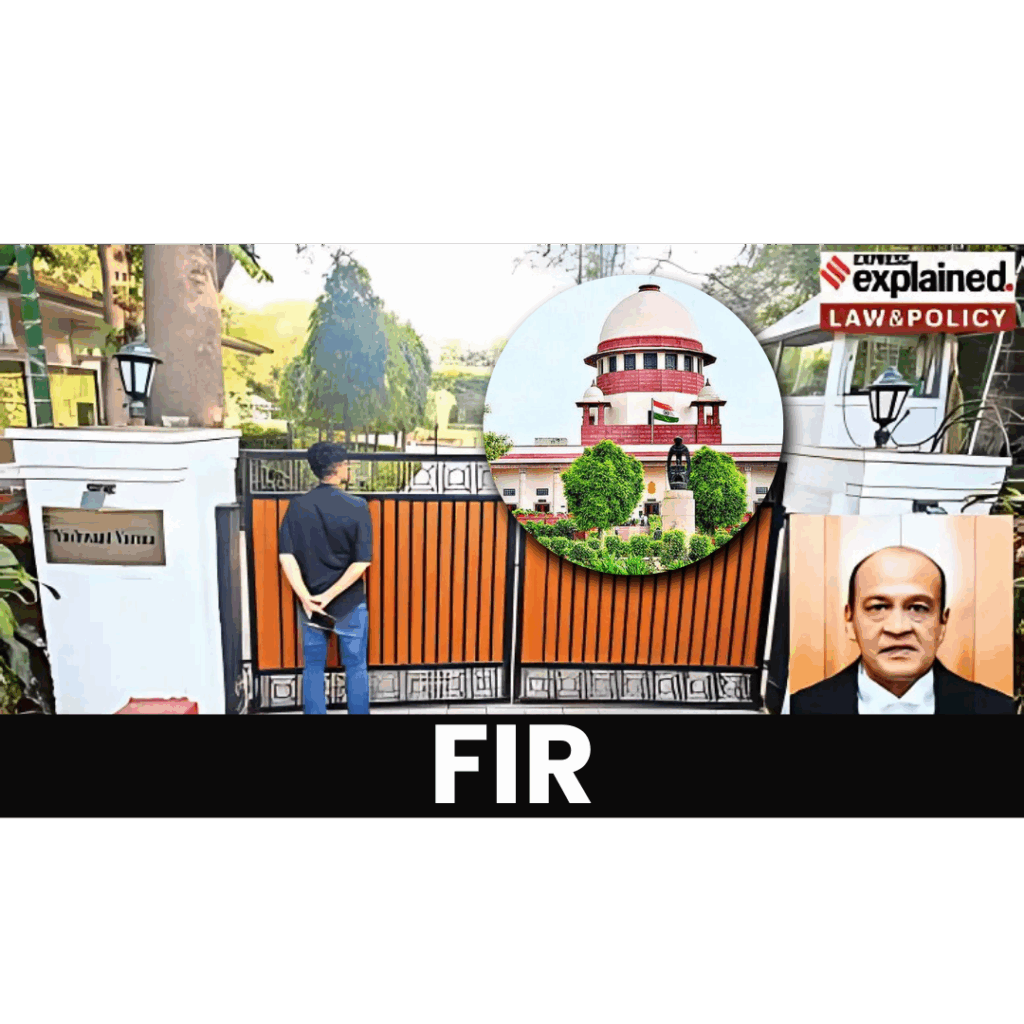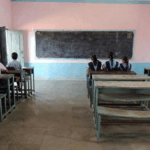The Veeraswami Case Explained: FIRs Against Sitting Judges and Judicial Accountability (GS2 – UPSC)
Relevance:
- GS2 – Polity & Governance: Judicial accountability, checks and balances, powers and limitations of the judiciary.
- Ethics & Essay: Balancing judicial independence with transparency and public trust in legal institutions.
Recently, the Vice President of India has criticised the in-house inquiry as having “no legal sanctity” and called for reviewing the Veeraswami judgment, terming it a “scaffolding of impunity”.

Constitutional Safeguard for Judges:
- It is fundamental to the independence of the judiciary that judges should be able to decide cases without fear of personal consequences, including criminal prosecution.
The only procedure prescribed in the Constitution is the removal of a judge through impeachment.
- Article 124: Removal of a Supreme Court (SC) judge.
- Article 218: Removal of a High Court (HC) judge.
The judge can only be removed by Parliament on two grounds:
- Proven misbehaviour or incapacity.
- Proven misbehaviour and incapacity are not defined in the Constitution.
- The impeachment process requires a motion to be passed in both the Lok Sabha and Rajya Sabha with at least two-thirds of those present and voting, in such a way that it is more than 50% of the total membership of each House, i.e., a special majority.
- If the Parliament approves, the President issues the final removal order. However, no SC Judge has been impeached so far.
What is an In-house Inquiry?
- The Chief Justice of India (CJI) sets up a panel of judges to verify if there is a prima facie case against a judge.
- The report is sent to the CJI, who may forward it to the President or the executive. If the judge is found guilty of misconduct, the panel can recommend voluntary resignation, withdrawal of judicial work and initiation of impeachment proceedings.
- It is not a legal or statutory proceeding, it is an internal fact-finding process. It cannot lead directly to an FIR or prosecution. The CJI himself has limited powers to deal with errant judges beyond transferring or withdrawing work from the judge.
Veeraswami Case (1991): When can a sitting judge face an FIR?
- In the Veeraswami case, Justice K. Veeraswami, former Chief Justice of the Madras High Court, was accused of possessing assets disproportionate to his known sources of income.
- The central legal question was whether a sitting judge could be prosecuted under the Prevention of Corruption Act, and if so, who had the authority to sanction such prosecution.
The SC held that:
- A sitting judge of a High Court or the Supreme Court can be prosecuted under the Prevention of Corruption Act, but only with prior sanction from the Chief Justice of India.
- While a judge can be considered a public servant for a corruption case to be registered against him, the sanction must come from the CJI.
- Ordinarily, the sanction is granted by the authority that has the power to appoint the public servant. But the SC emphasised that there is no master and servant relationship or employer and employee relationship between a Judge and the President of India.
- The judgment aims to maintain a balance between Judicial independence and judicial accountability.
In 2019, for the first time, then CJI Ranjan Gogoi permitted the CBI to register an FIR against Justice S N Shukla of the Allahabad High Court for alleged favours to a private medical college for MBBS admissions.
Removal process of a Judge of the High Court
- A judge of the High Court can be removed from his/her office by an order of the President. The President can issue the removal order only after an address by the Parliament has been presented to him/her in the same session for such removal.
- The address must be supported by a special majority of each House of the Parliament (i.e., a majority of the total membership of that House and a majority of not less than two-thirds of the members of that House present and voting).
- The grounds for removal are two:
- Proven misbehaviour or incapacity. Thus, a judge of the High Court can be removed in the same manner and on the same grounds as a judge of the Supreme Court.
The Judges Enquiry Act (1968) regulates the procedure relating to the removal of a judge of a High Court by the process of impeachment:
- A removal motion signed by 100 members (in the case of Lok Sabha) or 50 members (in the case of Rajya Sabha) is to be given to the Speaker/Chairman.
- The Speaker/Chairman may admit the motion or refuse to admit it. If it is admitted, then the Speaker/Chairman is to constitute a three-member committee to investigate the charges.
- The committee should consist of (a) the Chief Justice or a Judge of the Supreme Court, (b) the Chief Justice of a High Court, and (c) a distinguished Jurist.
- If the committee finds the judge to be guilty of misbehaviour or suffering from an incapacity, the House can take up the consideration of the motion.
- After the motion is passed by each House of Parliament by a special majority, an address is presented to the President for the removal of the judge.
Finally, the President passes an order removing the judge.
MAINS PRACTICE QUESTION
Question . Critically analyse the significance of the Supreme Court’s judgment in the Veeraswami case (1991) in balancing judicial independence and accountability. Do you agree with the Vice President’s recent remarks calling for a review of this judgment? Justify your answer with relevant constitutional provisions and case precedents.
PRELIMS PRACTICE QUESTION UPSC PYQ 2019
Question. Consider the following statements:
1. The motion to impeach a Judge of the Supreme Court of India cannot be rejected by the Speaker of the Lok Sabha as per the Judges (Inquiry) Act, 1968.
2. The Constitution of India defines and gives details of what constitutes incapacity and proven misbehaviour of the Judges of the Supreme Court of India.
3. The details of the process of impeachment of the Judges of the Supreme Court of India are given in the Judges (Inquiry) Act, 1968.
4. If the motion for the impeachment of a Judge is taken up for voting, the law requires the motion to be backed by each House of the Parliament and supported by a majority of total membership of that House and by not less than two-thirds of total members of that House present and voting.
Which of the statements given above is/are correct?
(a) 1 and 2 only
(b) 3 only
(c) 3 and 4 only
(d) 1, 3 and 4
Answer: (c)
The correct answer is (c) 3 and 4 only.
Explanation:
- Statement 3 is correct:
- The Judges (Inquiry) Act, 1968, outlines the procedure for impeaching a Supreme Court Judge, including the process of initiating a motion, conducting an inquiry, and voting on the impeachment.
- Statement 4 is correct:
- The process of impeachment requires a majority vote in both houses of Parliament, with at least two-thirds of the members present and voting in each house supporting the motion.
- Statement 1 is incorrect:
- The Speaker of the Lok Sabha can reject a motion to impeach a judge if it is deemed frivolous or does not meet the necessary criteria.
- Statement 2 is incorrect:
- The Constitution of India outlines the grounds for removal of a judge, but it doesn’t provide the specifics of incapacity and proven misbehaviour. The Judges (Inquiry) Act fills in these details.







